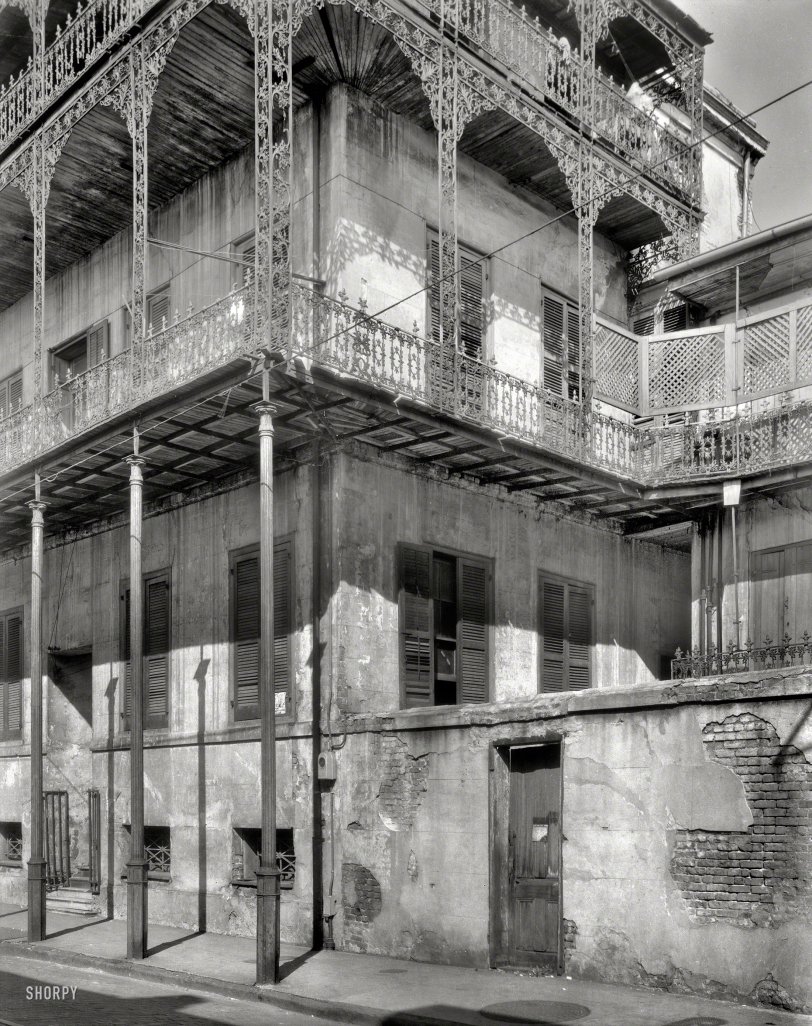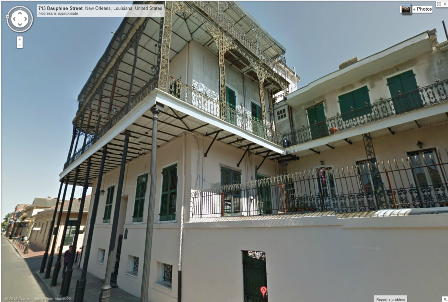


Framed or unframed, desk size to sofa size, printed by us in Arizona and Alabama since 2007. Explore now.
Shorpy is funded by you. Patreon contributors get an ad-free experience.
Learn more.

- Lofty addition
- In 1912
- Keenan Building
- Six years old
- Taken from the P.J. McArdle Roadway?
- It stood only 47 years
- Three track mind
- Incline to the right
- Reach for the sky, 1912 style
- No clean sweep
- Same Job Title, Same Face
- Sadly Lost
- Beautiful ...
- Where you get your kicks
- Aim High
- Pueblo Revival sisters
- Pueblo Neoclassicism
- Milk Man
- Regional dialect.
- Spielberg's inspiration
- Great Photo
- Loaf Story
- Do you still have the Rakes category?
- Could almost be a scene from the 1957 movie 'Hell Drivers'
- The Wages of Fear.
- Conspicuous by their absence
- Got Milk?
- All that aluminum
- No lefties
- Smoke 'em if you've got 'em
Print Emporium
Moldy Manse: 1937

New Orleans, 1937. "Le Pretre Mansion, 716 Dauphine Street, built 1835-6. Joseph Saba house." Our third look at the so-called Sultan's Palace. 8x10 inch acetate negative by Frances Benjamin Johnston. View full size.
Origin of the Legend
The Gardette-LaPretre house, aka the "House of the Turk" and the "Sultan's Palace." The legend of the massacre, much beloved of New Orleans ghost tour guides is, of course, bogus. The legend, initially published in the 1840's, probably predates the 1836 construction of the still extant house shown in this lovely 1930's photograph.
The first mention of the story that I'm aware of is in Charles Gayarre's History of Louisiana, published in 1846 in French. This is only 10 years after construction of the present building, and Gayarre claims that he first heard the story around 1820 from an eighty-year old gentleman who heard the story from his own father. In Gayarre's tale, the incident took place in 1727 over a hundred years before construction of the Gardette-LaPretre house, and before any of the present buildings in the French Quarter were built.
At that time, most of the city residences were crude wood-framed cottages, of which none remain. Referred to by the author as a legend, his story is actually relatively simple and plausible. A member of the Ottoman sultan's family, possibly a brother, escaped disfavor by fleeing to Paris, and was, for diplomatic reasons, exiled by the French to the then very remote and undeveloped colony of Louisiana, being kept under house arrest at a small cottage at the corner of Orleans and Dauphine. Then, after a dark and stormy night, the cottage was found empty with a newly dug grave in the garden along with an engraved marble plaque:
"The justice of heaven is satisfied, and the date-tree shall grow on the traitor's tomb. The sublime Emperor of the faithful, the supporter of the faith, the omnipotent master and Sultan of the world, has redeemed his vow. God is great, and Mohammed is his prophet. Allah!"
There is mention of a Turkish vessel seen in Barataria Bay and a troop of murderers lurking through the storm. Shortly afterwards an unusual date palm sprouted from the grave.
Apparently fratricide was at one time part of the normal means of succession of the Ottoman empire, and at the time of the supposed events, rival family members were often put under house arrest in the palace harem. Perhaps the crisis associated with the 1730 Janissary revolt. Succession of a new Sultan could have caused an important Ottoman to flee Istanbul.
In any case, the story seems to have centered on explaining a well-known, curious old palm tree that was present on the site at the time of Gayarre's writing. The more lurid tales of a bloody massacre told today seem based on a work of fiction by Helen Pitkin Schertz, "The Brother of the Sultan," in Legends of Louisiana (1922).
The curious date palm has it's own romantic legend, but that's another photograph.
This is exactly the place
I pictured in my head that Ignatius J. Reilly's mama had her automobile accident.
Not so much moldy as battered
This Old House has it listed as a murder house; although the whole sultan's murder (+ all of his entourage) may be apocryphal.
And it still looks pretty much the same:

























On Shorpy:
Today’s Top 5